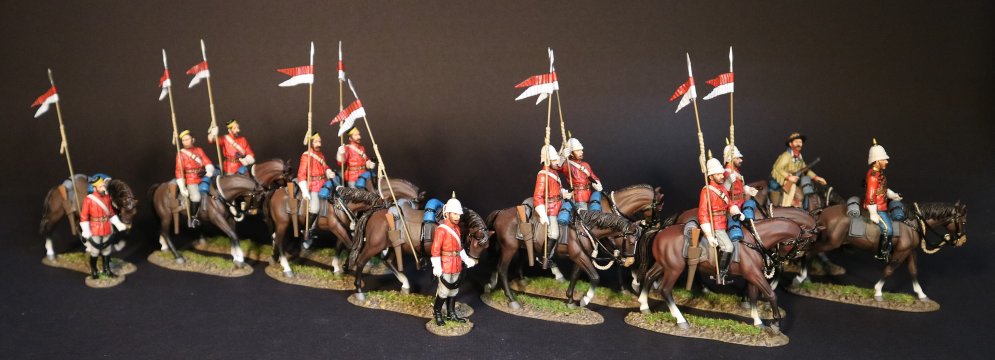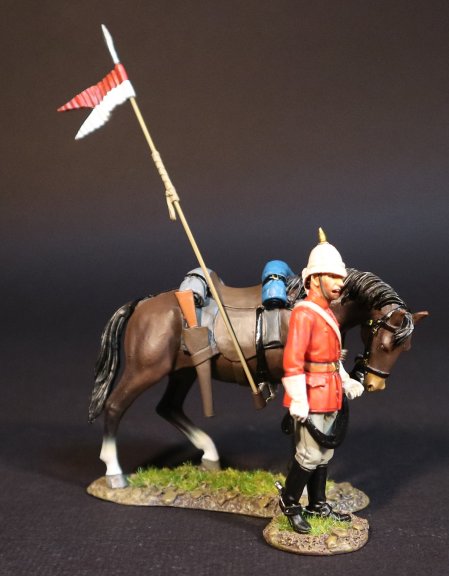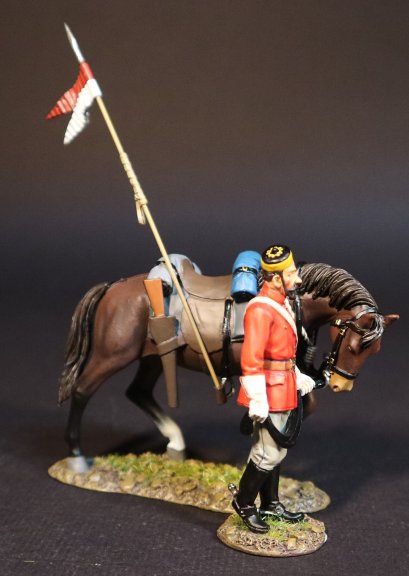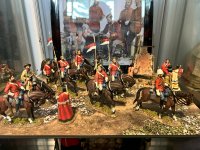- Joined
- Feb 2, 2011
- Messages
- 2,380
NEW RELEASES FOR AUGUST 2024
THE FUR TRADE
THE NORTH WEST MOUNTED POLICE
THE MARCH WEST
The NWMP was established by the Canadian government during the ministry of Prime Minister Sir John Macdonald who defined its purpose as “the preservation of peace and the prevention of crime” in the vast NWT.
Macdonald’s principal fear was that the activities of American traders which led to the Cypress Hills Massacre would lead to the First nations peoples killing American traders, which would lead to the United States military being deployed into the NWT to protect the lives of American citizens under the grounds that Canada was unable to maintain law and order in the region.
His greatest fear was that if the Americans occupied the NWT that they would not leave and the region would be annexed to the United States.

The NWMP was established in 1873, and were deployed to the area of the present Alberta border.
Their ill-planned and arduous journey of nearly 900 miles became known as the March West, and is portrayed as an epic journey of endurance.
Over the next few years, the NWMP established a wide network of forts, posts and patrols and extended Canadian law across the region. The living conditions of the NWMP on the prairies were spartan and often uncomfortable, and only slowly improved over the course of the century.

WSP-75
THE FUR TRADE,
THE NORTH WEST MOUNTED POLICE,
THE MARCH WEST 1874,
MOUNTED POLICEMAN.
(3 pcs)
(RCMP USED UNDER LICENCE)
Colonel George French was the commissioner of this new force, and was ordered to proceed west from Fort Dufferin to deal with what the authorities described as the “band of desperadoes” around Fort Whoop-Up, before then dispersing his force to establish police posts stretching across the territories.

WSP-80
THE FUR TRADE,
THE NORTH WEST MOUNTED POLICE,
THE MARCH WEST 1874,
MOUNTED POLICEMAN.
(3 pcs)
(RCMP USED UNDER LICENCE)
Following instructions from Ottawa, French agreed that the expedition would initially follow the trail along the southern line of the border, but then would steer north away from the border and Sioux territory, as it was argued that it might encourage an attack by the Sioux on the column.
The mounted police finally left Dufferin on July 8th 1874 and the 275 strong expedition was divided into six divisions, supported by 310 horses, 143 draught oxen, and 187 Red River Carts and wagons. The column stretched out 1.5 miles along the track.
The force also took two 9-pounder guns and two mortars.
Henri Julien a journalist had been given permission to accompany the expedition.
The Expedition made slow time, progressing only 15 miles a day at most.
On July 29th, the main force then turned off the trail and headed across the much drier and rougher prairies, the north -west. The police had no water bottles and soon both their food and water ran out, and as the weather worsened, their horses began to die.
When the force arrived at what they thought was Fort Whoop-Up at the junction of the Bow and South Saskatchewan rivers on September 10th, there was nothing to be seen, as the fort was in fact another 75 miles away.
The police had also expected the area to contain good grazing for their horses but it was barren and treeless. French was forced to abandon the plan to head to Whoop-Up and instead travelled 70 miles south towards the border, where supplies could be purchased from the United States.
More horses were to die from the cold and hunger, and many of the men were barefoot and in rags by the time they arrived at the border, having travelled a total of nearly 900 miles.
After resupplying, French led some of his force back east, leaving Assistant Commissioner James Macleod to advance on Fort Whoop-Up with the three remaining divisions, approximately 150 men.
When the force arrived at the Fort on October 9th, they were prepared for a confrontation, but the whisky traders had been aware of the approaching expedition and had long since moved away.
The force received new orders from Ottawa to garrison the area and settled down to build Fort Macleod on an island in Old Man’s River.
The expedition had been badly planned and executed, and almost failed; the historian William Baker describes it as "a monumental fiasco of poor planning, ignorance, incompetence, and cruelty to men and beasts".
The lance had developed from the crude spear as one of mankind’s first offensive weapon. At the time of the formation of the NWMP, the lance was a weapon of the cavalry.
Although it started in this capacity as a weapon with the NWMP, it was eventually to assume a purely ceremonial role.
The pennon supplied for the March West was the British pattern, red and white in colour.
The origin of the red and white pennon has been coloured by legend, with the most popular misconception being that white cloth was originally wound around the lance shaft prior to an engagement to stop enemy blood from running down the shaft and making it slippery. When the cloth was removed after the battle the part nearest the point was blood red.
In fact the original idea of the pennon was to frighten enemy horses.
The crimped pennon is an innovation dating from the British defeat of the Sikhs at Aliwal, North west India on January 28th 1846, when the pennons of the 16th lancers became crumpled and bloodstained.
By parliamentary decree the assignment of colours is a royal prerogative, and a royal proclamation dated November 21st 1921, assigned red and white to Canada as her national colours.
** PLEASE CONTACT YOUR LOCAL DEALER FOR FURTHER INFORMATION **
THE FUR TRADE
THE NORTH WEST MOUNTED POLICE
THE MARCH WEST
The NWMP was established by the Canadian government during the ministry of Prime Minister Sir John Macdonald who defined its purpose as “the preservation of peace and the prevention of crime” in the vast NWT.
Macdonald’s principal fear was that the activities of American traders which led to the Cypress Hills Massacre would lead to the First nations peoples killing American traders, which would lead to the United States military being deployed into the NWT to protect the lives of American citizens under the grounds that Canada was unable to maintain law and order in the region.
His greatest fear was that if the Americans occupied the NWT that they would not leave and the region would be annexed to the United States.

The NWMP was established in 1873, and were deployed to the area of the present Alberta border.
Their ill-planned and arduous journey of nearly 900 miles became known as the March West, and is portrayed as an epic journey of endurance.
Over the next few years, the NWMP established a wide network of forts, posts and patrols and extended Canadian law across the region. The living conditions of the NWMP on the prairies were spartan and often uncomfortable, and only slowly improved over the course of the century.

WSP-75
THE FUR TRADE,
THE NORTH WEST MOUNTED POLICE,
THE MARCH WEST 1874,
MOUNTED POLICEMAN.
(3 pcs)
(RCMP USED UNDER LICENCE)
Colonel George French was the commissioner of this new force, and was ordered to proceed west from Fort Dufferin to deal with what the authorities described as the “band of desperadoes” around Fort Whoop-Up, before then dispersing his force to establish police posts stretching across the territories.

WSP-80
THE FUR TRADE,
THE NORTH WEST MOUNTED POLICE,
THE MARCH WEST 1874,
MOUNTED POLICEMAN.
(3 pcs)
(RCMP USED UNDER LICENCE)
Following instructions from Ottawa, French agreed that the expedition would initially follow the trail along the southern line of the border, but then would steer north away from the border and Sioux territory, as it was argued that it might encourage an attack by the Sioux on the column.
The mounted police finally left Dufferin on July 8th 1874 and the 275 strong expedition was divided into six divisions, supported by 310 horses, 143 draught oxen, and 187 Red River Carts and wagons. The column stretched out 1.5 miles along the track.
The force also took two 9-pounder guns and two mortars.
Henri Julien a journalist had been given permission to accompany the expedition.
The Expedition made slow time, progressing only 15 miles a day at most.
On July 29th, the main force then turned off the trail and headed across the much drier and rougher prairies, the north -west. The police had no water bottles and soon both their food and water ran out, and as the weather worsened, their horses began to die.
When the force arrived at what they thought was Fort Whoop-Up at the junction of the Bow and South Saskatchewan rivers on September 10th, there was nothing to be seen, as the fort was in fact another 75 miles away.
The police had also expected the area to contain good grazing for their horses but it was barren and treeless. French was forced to abandon the plan to head to Whoop-Up and instead travelled 70 miles south towards the border, where supplies could be purchased from the United States.
More horses were to die from the cold and hunger, and many of the men were barefoot and in rags by the time they arrived at the border, having travelled a total of nearly 900 miles.
After resupplying, French led some of his force back east, leaving Assistant Commissioner James Macleod to advance on Fort Whoop-Up with the three remaining divisions, approximately 150 men.
When the force arrived at the Fort on October 9th, they were prepared for a confrontation, but the whisky traders had been aware of the approaching expedition and had long since moved away.
The force received new orders from Ottawa to garrison the area and settled down to build Fort Macleod on an island in Old Man’s River.
The expedition had been badly planned and executed, and almost failed; the historian William Baker describes it as "a monumental fiasco of poor planning, ignorance, incompetence, and cruelty to men and beasts".
The lance had developed from the crude spear as one of mankind’s first offensive weapon. At the time of the formation of the NWMP, the lance was a weapon of the cavalry.
Although it started in this capacity as a weapon with the NWMP, it was eventually to assume a purely ceremonial role.
The pennon supplied for the March West was the British pattern, red and white in colour.
The origin of the red and white pennon has been coloured by legend, with the most popular misconception being that white cloth was originally wound around the lance shaft prior to an engagement to stop enemy blood from running down the shaft and making it slippery. When the cloth was removed after the battle the part nearest the point was blood red.
In fact the original idea of the pennon was to frighten enemy horses.
The crimped pennon is an innovation dating from the British defeat of the Sikhs at Aliwal, North west India on January 28th 1846, when the pennons of the 16th lancers became crumpled and bloodstained.
By parliamentary decree the assignment of colours is a royal prerogative, and a royal proclamation dated November 21st 1921, assigned red and white to Canada as her national colours.
** PLEASE CONTACT YOUR LOCAL DEALER FOR FURTHER INFORMATION **


